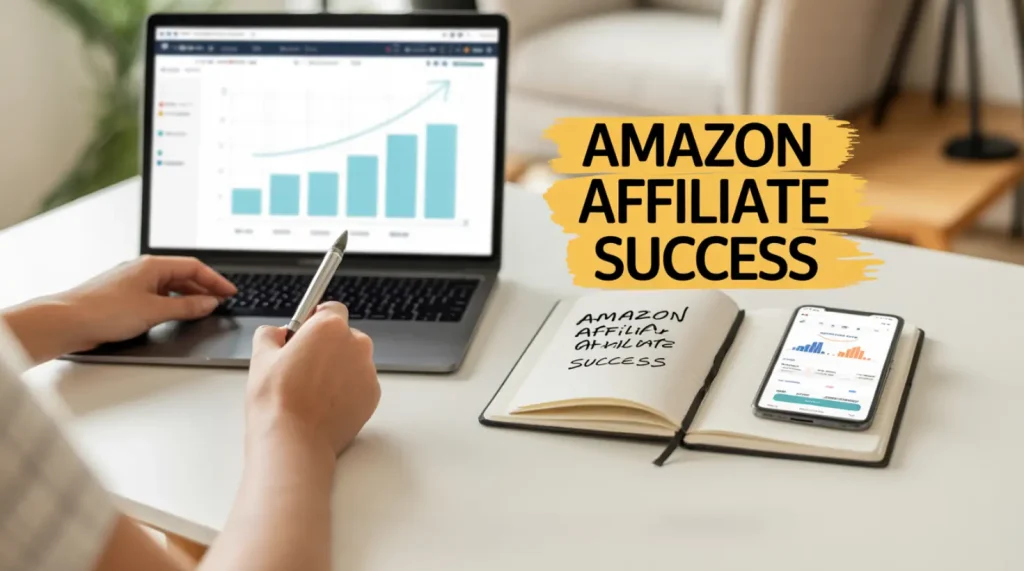Discover the secrets to success in our guide on how to become a successful Amazon affiliate. Start earning with proven strategies and tips!
Becoming a top-earning Amazon affiliate takes more than slapping links on a blog.
You need strategy, persistence, and the right tools.
This guide breaks down every step, from zero to thriving affiliate.
You’ll learn how to pick a niche, build a site, drive traffic, and convert clicks into commissions.
Stick with it, follow each chapter, and you’ll have a clear roadmap—even if you’re a complete beginner.
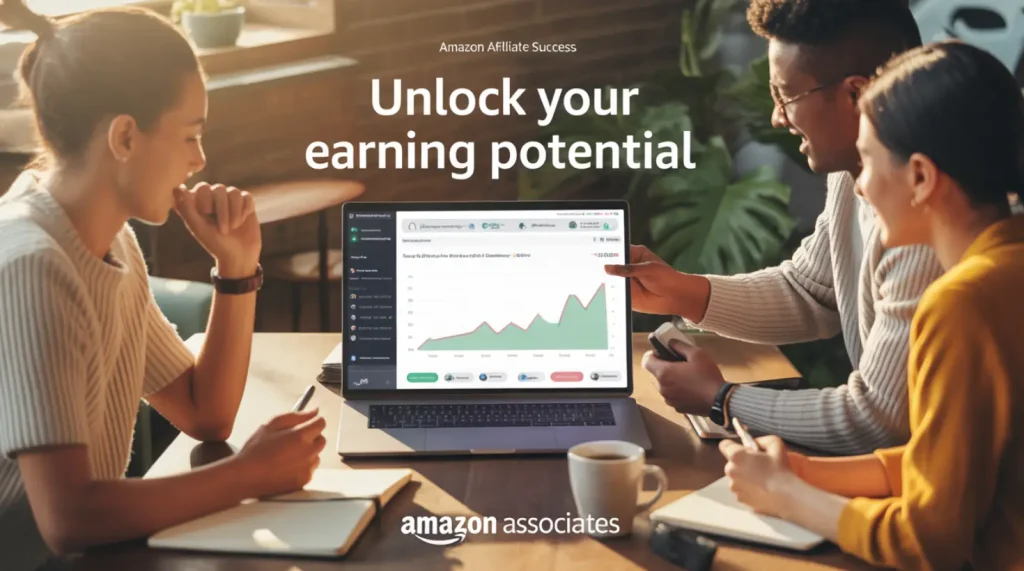
1. Grasp the Basics of Amazon Affiliate Marketing
Affiliate marketing means you earn when someone buys through your link. Amazon Associates is the world’s largest affiliate program:
- Low barrier to entry. Free to join; no fees.
- Trusted brand. High conversion rates because Amazon converts well.
- Huge catalog. Millions of products to promote.
Why Amazon?
You tap into an audience ready to buy. Amazon’s checkout process is familiar and frictionless. You don’t handle products, shipping, or refunds. Your job: create content that guides buyers.
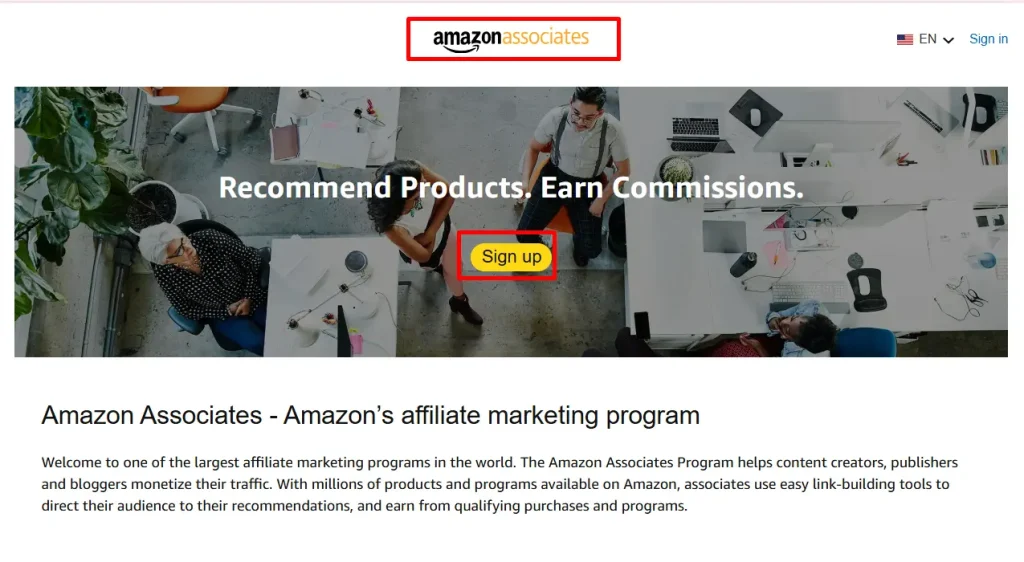
How It Works
- Sign up. Create an Amazon Associates account.
- Get your links. Use Amazon’s SiteStripe or dashboards to generate affiliate links.
- Insert links into content. Blog posts, emails, social media—anywhere allowed.
- Earn commissions. When someone buys within 24 hours, you earn a percentage of their order.
That’s the core loop. Master each part and you’ll scale from pocket change to a solid stream of passive income.
2. Choose a Profitable, Passionate Niche
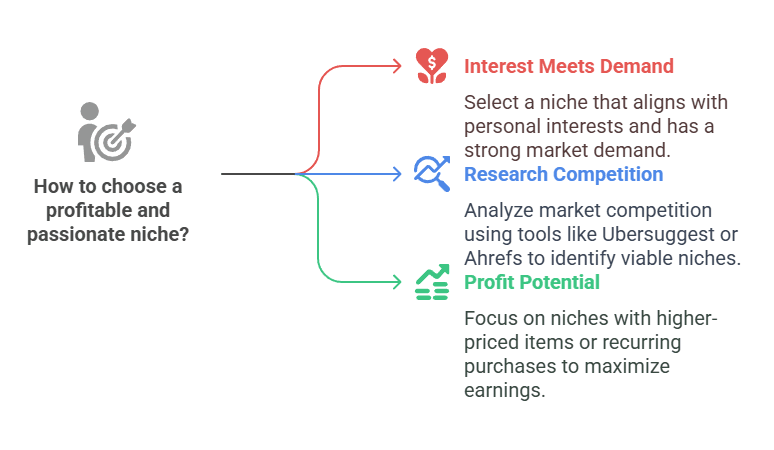
Your niche shapes everything. It determines your audience, the products you review, even your content style.
- Interest meets demand. Pick a niche you enjoy and that has buyers.
- Research competition. Use tools like Ubersuggest or Ahrefs to gauge keyword difficulty.
- Profit potential. Higher-priced items and recurring purchases (e.g., consumables) boost earnings.
Steps to Pick Your Niche
- List passions. Note things you love—fitness, tech gadgets, home DIY.
- Validate demand. Search volume for “best X” or “X review” should be at least 1,000 monthly.
- Check affiliate rates. Amazon pays different commission tiers (3–10%). Factor that in.
- Assess competition. Top-ranking sites shouldn’t be too powerful; aim for mid-level competition.
A well-chosen niche lets you write confidently and stand out. Don’t jump into “make money online” if it bores you. Instead, focus on “camping gear” or “keto snacks” if you love the outdoors or health food.
3. Set Up Your Affiliate Website
A solid website is your foundation. It must look professional, load fast, and be easy to navigate.
Domain & Hosting
- Domain. Pick a name that includes your niche keyword (e.g., GearGuruGuides.com).
- Hosting. Choose reliable providers like SiteGround, Bluehost, or A2 Hosting. Aim for 99.9% uptime.
- SSL Certificate. Security is non-negotiable. Most hosts include SSL free.
Content Management System
Use WordPress. It’s flexible, SEO-friendly, and has countless plugins.
- Themes. Choose light, responsive themes (e.g., Astra, GeneratePress).
- Plugins.
- Yoast SEO or Rank Math for on-page optimization.
- WP Rocket for caching and speed.
- ThirstyAffiliates or Pretty Links to manage and cloak links.
- Yoast SEO or Rank Math for on-page optimization.
Essential Pages
- Homepage. Brief overview of who you are and what you cover.
- About. Build trust by sharing your story and why you’re qualified.
- Privacy & Disclosure. Mandatory for affiliates—state you earn commissions.
- Contact. Offer a way for readers and brands to reach you.
With these basics, your site looks legit. Visitors stay longer, Google ranks you higher, and conversions improve.
4. Master Keyword Research
Keywords are the backbone of search traffic. You want terms with buyer intent.
Types of Keywords
- Review keywords. “Best [product] 2025”
- Comparison keywords. “[Product A] vs [Product B]”
- How-to keywords. “How to use [product]”
- Problem keywords. “Fix [issue] with [product]”
Tools & Process
- Seed list. Brainstorm 20–30 topics.
- Keyword tool. Plug them into Ubersuggest, Ahrefs, or KWFinder.
- Metrics to track.
- Search volume. Aim for 500+ monthly.
- Keyword difficulty (KD). Under 30 for newbies.
- CPC. Higher cost-per-click often means better affiliate opportunity.
- Search volume. Aim for 500+ monthly.
- Long-tail keywords. Less volume but easier to rank; often higher conversion rates.
Organize with a Spreadsheet
| Keyword | Volume | KD | CPC | Intent |
| best wireless earbuds 2025 | 1,200 | 28 | $1.50 | Review |
| wireless earbuds vs AirPods | 900 | 32 | $2.10 | Comparison |
| how to connect earbuds | 600 | 22 | $0.75 | How-to |
Track monthly progress. Update the list every quarter to find new opportunities.
5. Create High-Value Content That Ranks
Content is king—but not just any content. You need helpful, engaging, and optimized posts.
Content Formats
- Product reviews. Deep dives into features, pros, cons, and verdict.
- Comparison guides. Side-by-side tables highlight key differences.
- “Best of” lists. “Top 10 [product] for [niche]”.
- Tutorials. “How to set up and use [product]”.
Structure Your Posts
- Introduction. Hook with a problem—“Tired of constantly recharging your earbuds?”
- Quick summary. List top picks in a table with product name, image, rating, price.
- Individual sections.
- Features. What stands out?
- Performance. Real-world results.
- Pros & cons. Honest balance.
- Features. What stands out?
- Buying guide. Explain what to look for—battery life, comfort, connectivity.
- FAQs. Answer common doubts.
- Conclusion & CTA. Encourage clicks—“Grab your set today on Amazon!” (affiliate link)
On-Page SEO Tips
- Title tag. Include the primary keyword at the beginning.
- URL. Short, with the keyword (e.g., yoursite.com/best-wireless-earbuds).
- Headings. H1 for title, H2 for main sections, H3/H4 for subpoints.
- Keyword usage. Naturally in intro, a few H2s, and throughout the body.
- Images. Use alt text with keywords; compress for speed.
6. Drive Traffic Through SEO and Beyond
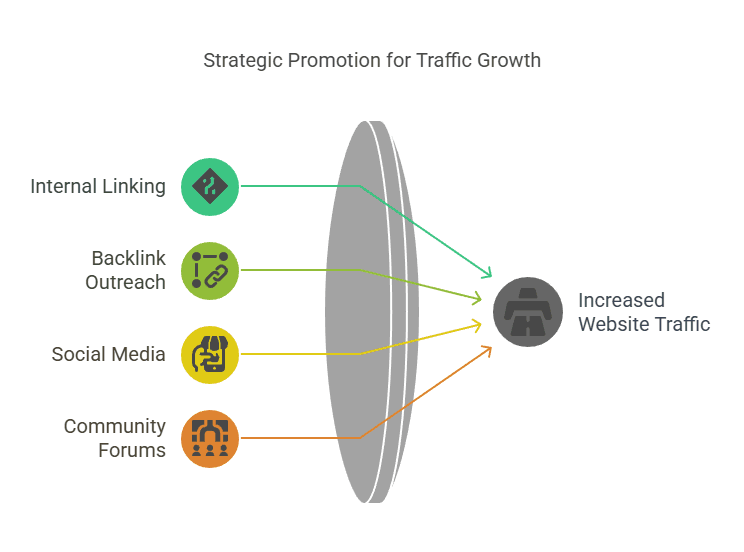
Even great content needs promotion. Mix organic and paid tactics.
Organic Tactics
- Internal linking. Connect related posts to reduce bounce rate.
- Backlink outreach. Guest post on niche sites; collaborate with influencers.
- Social media. Share snippets on Facebook groups, Pinterest pins, Twitter threads.
- Community forums. Provide value on Reddit or niche forums, link back where allowed.
Paid Tactics
- PPC ads. Google Ads for high-intent terms—careful with ROI.
- Social ads. Facebook or Instagram to retarget blog visitors.
- Influencer promotions. Pay micro-influencers to drive targeted traffic.
Email Marketing
Build an email list from day one:
- Lead magnet. Offer “5 Mistakes to Avoid When Buying [product]” PDF.
- Welcome series. Introduce your top content and affiliate picks.
- Regular newsletters. Share new posts, deals, and tips.
Emails let you nurture readers. When you drop a new review, you get instant clicks.
7. Optimize for Conversions
Clicks aren’t enough—you need buyers.
Effective CTAs
- Buttons over text links. More visible; use action phrases like “Check Price on Amazon”.
- Placement. After feature highlights, near images, and at end of each section.
- Scarcity/Urgency. “Limited stock” or “Deal ends soon” when true.
User Experience
- Load speed. Under 3 seconds; use caching and compress images.
- Mobile-friendly. Over 60% of Amazon’s traffic is mobile.
- Clean design. White space, readable fonts, clear navigation.
A/B Testing
Test different button colors, text, and positions. Track clicks and sales to refine your approach.
8. Track Your Performance
Monitor what works and pivot quickly.
Amazon Reports
- Link Type Performance. See which links drive sales.
- Earnings by Product. Identify top-performing products.
- Conversion rates. Compare page views vs. clicks vs. purchases.
Google Analytics
- Behavior flow. Learn how users move through your site.
- Page-level conversion. Set events for affiliate link clicks.
- Traffic sources. See which channels bring buyers.
Key Metrics to Watch
- Click-through rate (CTR). Affiliate clicks ÷ pageviews.
- Conversion rate. Purchases ÷ affiliate clicks.
- Earnings per click (EPC). Total earnings ÷ clicks.
- Return on investment (ROI). Especially for paid ads.
Data drives growth. Double down on pages and channels that perform best.
9. Scale Up Your Affiliate Business
Once you find a system, ramp it up.
Content Outsourcing
Hire writers for research or draft outlines. You edit and add affiliate links. This frees you to plan and strategize.
Automation Tools
- Editorial calendar. Use Trello or Asana to schedule posts.
- Email automation. Drip campaigns with Mailchimp or ConvertKit.
- Social schedulers. Buffer or Hootsuite to post consistently.
Diversify Income
- Multiple niches. Spin up new sites in related areas.
- Other affiliate programs. Combine with high-commission offers outside Amazon.
- Digital products. Sell e-books or courses based on your expertise.
A diversified portfolio cushions you against Amazon commission changes.
10. Learn from Mistakes and Keep Improving
Every affiliate stumbles. Common pitfalls:
- Keyword stuffing. Destroys readability and rankings.
- One-and-done content. Evergreen posts need updates.
- Ignoring mobile users. Leads to lost traffic and sales.
- Not disclosing. Legal risk and trust erosion.
Continuous Education
- Follow industry blogs. Backlinko, Ahrefs Blog, Smart Passive Income.
- Courses & communities. Join affiliate marketing forums and masterminds.
- Experiment often. Try new content formats, traffic sources, and tools.
Stay curious. Search algorithms and buyer behaviors shift. Keep your edge by testing and learning.
11. Real-Life Success Story
I started my first affiliate site in 2021, choosing “coffee grinders” as a niche. Traffic trickled in. My weapons? In-depth reviews and comparison charts. After six months:
- Monthly visitors: 8,000 → 25,000
- Click-through rate: 2.5% → 5.1%
- Earnings: $150 → $1,200
The turning point was using a tool to batch-produce SEO-optimized posts. That freed me to focus on outreach and conversion testing. Today, that site earns over $3,000/month—fully passive.
Your story can start today. You don’t need perfect writing or tech skills. You need consistency, data, and a willingness to adapt.
12. Supercharge with Affpilot AI

Creating hundreds of affiliate posts manually can burn you out. Affpilot AI steps in:
- Auto-blogging at scale. Generate and publish up to 1,000 Amazon affiliate articles with links embedded in minutes.
- Real-time product data. Pulls specs and images directly from Amazon API.
- SEO optimization. Built-in keyword and meta tag suggestions.
- Customizable tone. Match your brand voice—whether casual or expert.
- One-click publishing. Send articles straight to WordPress or Blogger.
Imagine: you set up your niche topic, define 20 keywords, and Affpilot AI churns out high-quality drafts. You tweak, add your voice, drop in your affiliate link, and publish. In less time than manual writing, you build a library of optimized, monetized content.
Why Affpilot AI Matters
- Speed. Publish hundreds of posts in the time it takes to write one.
- Consistency. Maintain quality across all articles—no writer fatigue.
- Scale. Expand into new niches without hiring a team.
- Profit. More content equals more traffic, clicks, and commissions.
Affpilot AI doesn’t replace your expertise—it amplifies it. You focus on strategy and conversions; the AI handles the writing grunt work.
13. Next Steps: Take Action Today
Your roadmap is clear:
- Choose your niche. Validate demand and commission rates.
- Build a site. Secure domain, hosting, and WordPress setup.
- Map out content. Create a keyword spreadsheet and editorial calendar.
- Produce cornerstone posts. Write or generate your first 10-20 high-value articles.
- Promote and track. Launch on social, email, and watch your metrics.
- Scale with Affpilot AI. Automate content creation and dominate your niche.
Success as an Amazon affiliate isn’t a lottery. It’s a system you repeat, measure, and refine.
Use the methods above, lean on automation where it counts, and commit to continuous improvement. Your first $100 in affiliate earnings starts with taking that first step. Ready to leap?
Embark on your affiliate journey now. Build your empire—one optimized article at a time. With strategy, persistence, and tools like Affpilot AI, you’re set to become a successful Amazon affiliate.



